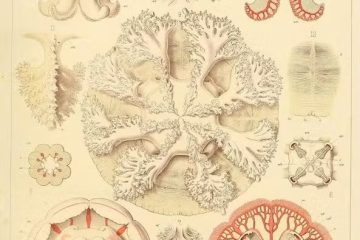How Not to Be the Easter Police: On the Resurrection of the Earth

Photo by Marion Grau
A certain kind of theologian—I was once one among them—scrupulously draws a sharp dichotomy between the “pagan” elements of Christian Easter festivities and Easter’s true meaning. On one hand, we have the bunnies, eggs, and such, which celebrate the renewal of Spring out of the death of winter. On the other stands the genuine meaning of Easter, which commemorates Jesus’s new life after state execution. This Easter is about the resurrection of hope for the oppressed, I would have insisted. When the Jesus who was executed by Rome rises again, all those who have been crushed and buried by violence and oppression find hope for new life. Easter is not just another Spring fertility festival.
Now that dichotomy seems problematic and unfortunate, especially as we can no longer take for granted the rebirth of nature. The exploitative forces that crucified Jesus, that oppress the poor, and wound the earth are the same. In every case, an elite and greedy few exercise power to secure their own interests as the expense of many. Liberation theologians like Leonardo Boff and James Cone have been telling us now for some time that the cry of the poor and the cry of the Earth cannot be separated. As James Cone puts it, “People who fight against white racism but fail to connect it to the degradation of the earth are anti-ecological—whether they know it or not. People who struggle against environmental degradation but do not incorporate in it a disciplined and sustained fight against white supremacy are racists—whether they acknowledge it or not. The fight for justice cannot be segregated but must be integrated with the fight for life in all its forms.”
This intuition—joining the crucifixion of Jesus, the oppression of the poor, and the degradation of the planet—is captured well by a recent Climate Strike protest sign held up by students from the MF Norwegian School of Theology, Religion and Society, “Where [sic] you there when they crucified my world?” (Oslo, March 22). They know that the body of Mother Earth also now labors under crucifixion.
If the global elites who live by their fossil fuel addiction are crucifying the world, Nature’s Spring rebirth is no longer assured. The earth stands also in need of new life and resurrection.
And yet, the incontestable reasons for old-style bunny policing—the traditional separation of the Spring fertility symbols from the oppression/redemption meaning of Easter—remain clear to many. To them, the death and resurrection of Jesus seem to have little to do with the fertility symbols and rites of early Spring. That they should be conflated seems problematic, even a kind of dubious syncretism. The stark logic of cross and resurrection appears to be alien to fertility concerns especially if one believes that the rebirth of Spring is to be expected, inevitable, and hence “natural.”
Jesus’s death and resurrection do not qualify as natural events even if his violent demise could have been predicted. After all, suggesting that the kingdom Jesus heralded—and not Caesar’s reign—was the true Kingdom of God was guaranteed to shorten his life expectancy. But the resurrection that followed his state execution could not have been predicted. Christian theologies of resurrection vary wildly, but not a one would characterize it as part of the annual round of yearly Spring restoration. Resurrection comes as a complete surprise. It seems as certain as Spring to Christians now only because we have been celebrating the event for almost two thousand years.
On standard accounts, the cross occurs amidst the drama of politics and history; nature merely serves as the backdrop, the stage on which the real action plays out. While the resurrection exceeds the historical, it takes place in the life of a particular historical community’s dateable memory. Not so with Spring rebirth. We today still hold to the idea that history and politics are linear, moving forward in time, while the rhythms of nature’s unfolding are cyclical. History is history and nature is nature and never the twain shall meet.
Except when they do. Numerous contemporary philosophers and theologians have observed that nature now refuses to play the role of neutral and placid scenery, backdrop, or stage on which the theater of history plays itself out. Nature has become one of the actors if not the principal dramatis persona. Nature’s violated order and the resulting violent irregularities lead to increasing unpredictability that threaten the historical project altogether. A senior UN official reports that, due to soil depletion, the planet has only sixty harvests remaining—a number well within the lifetime of our children and grandchildren.
A recent Guardian story described this prediction as “apocalyptic,” a telling descriptor as the world does seem on the brink of ending. However, in biblical apocalypse texts, nature’s calamities are intimately linked with human activity. It is impossible to find within apocalyptic texts any clear and distinct boundary between nature and culture or nature and history. In fact, this is a pervasive feature of the entire Bible. Human deeds have natural import. The wellbeing of the land depends on human ethical comportment. Do righteousness, God tells Israel, and the land will flourish; fail to do so and the land is threatened. One finds these themes in Isaiah 24:
The earth dries up and withers,
the world languishes and withers;
the heavens languish together with the earth.
5 The earth lies polluted
under its inhabitants;
for they have transgressed laws,
violated the statutes,
broken the everlasting covenant.
6 Therefore a curse devours the earth,
and its inhabitants suffer for their guilt;
therefore the inhabitants of the earth dwindled,
and few people are left.
The book of nature and the book of scripture both testify to the falsity of the dichotomy between the natural and the historical.
What then are we to make of Easter bunnies and the eggs? Might the impulse to scrupulously excise the so-called pagan elements of our Easter celebrations have served to exacerbate ongoing Christian disregard for the vulnerable earth?
Perhaps it now falls to Christian theologians to speak of new birth in multiple registers, integrating our hopes for new life after death, for new, just treatment of the oppressed in this world, and hope for a regenerated planet. Gaia—in Greek mythology, the personification of Earth–too awaits resurrection. Curiously, perhaps we have been neither pagan enough nor biblical enough. The trouble lies not with the Easter Bunny but with our shortsightedness about the natural world.
So, blessings upon all new life—out of the grave of winter, the species deaths inflicted by climate change, and the political graves inflicted on the poor, the vulnerable and the marginalized. These deaths are not unrelated nor is the hope for new life for all, Earth included.
#
John J. Thatamanil is Associate Professor of Theology and World Religions at Union Theological Seminary. He is the author of The Immanent Divine: God, Creation, and the Human Predicament and the forthcoming book, Circling the Elephant: Constructive Theology through Interreligious Learning. He teaches courses on comparative theology, theologies of religions as well as a course on Gandhi and King. He is a past-President of the North American Paul Tillich Society and the founding chair of the American Academy of Religion’s Theological Education Committee. His Op-Eds have appeared in the Washington Post, the Los Angeles Times and a variety of sites online.
This Counterpoint blog post may be reprinted with the following acknowledgement: “This article was published by Counterpoint Navigating Knowledge on 1 May 2019.”
The views and opinions expressed on this website, in its publications, and in comments made in response to the site and publications are those of the author(s) and do not necessarily reflect the views and opinions of Counterpoint: Navigating Knowledge, its founders, its staff, or any agent or institution affiliated with it, nor those of the institution(s) with which the author is affiliated. Counterpoint exists to promote vigorous debate within and across knowledge systems and therefore publishes a wide variety of views and opinions in the interests of open conversation and dialogue.



